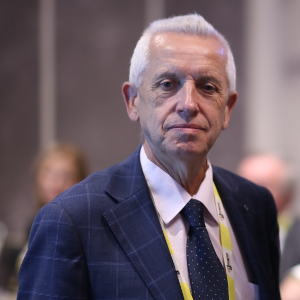Title : Design and Applications of Single-Site Zeolite Catalysts
Abstract:
The metal ions well dispersed at microporous zeolite framework are considered to be active sites of catalytic processes. Therefore, the incorporation of these metals into the microporous materials as isolated tetrahedral sites appears to be the important task. We have earlier shown that the incorporation of transition metal ions into vacant T-atom sites of framework zeolite is strongly favored when, in the first step, zeolite is dealuminated by treatment with nitric acid solution and then, in the second step, the incorporation of transition metal ions results in the reaction between the cationic metal species of the precursor solution and the SiO-H groups of vacant T-atom sites created by dealumination of zeolite.
During the plenary talk the design of new single-site zeolite catalysts with transition metal species (V, Fe, Co, Ni, Ag, Cu, Ta, Nb) will be described and characterized by different physical techniques both at the macroscopic level (chemical analysis, XRD, BET, thermal methods (TPR, TPO, TPD), TEM) and molecular level (FT-IR, NMR, diffuse reflectance UV-Vis, XPS, EPR, XAFS).
The application of single-site zeolite catalysts in different catalytic processes such as oxidative dehydrogenation of propane into propene, Fischer Tropsch synthesis, selective catalytic reduction of NOx to N2, hydrodechlorination of chlorinated volatile organic compounds into non-toxic, environmentally friendly products, production of 1,3-butadiene or hydrogen from renewable sources, including ethanol obtained from biomass will be discussed.
This two-step postsynthesis method applied in this work allowed obtaining single sites V-, Fe-, Co-, Ni-, Ag-, Cu-, Ta- and Nb-containing zeolite catalysts with mononuclear metal species active in above mentioned processes. Their catalytic activity strongly depends on the speciation and amount of metal incorporated into zeolite structure as well as their acidity.



